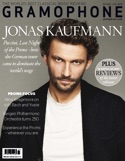Texte paru dans: / Appeared in: |
|
|
Outil de traduction (Très approximatif) |
|
|
Reviewer:
Julie Anne Sadie Listeners to this attractive CD need to know from the outset that what they are hearing is only partly Delalande (or Lalande, as he was also known). The music he composed to be performed when Louis XIV and the young Louis XV dined formally was copied and collected in mainly two- and three-part reduced scores after his death, examples of which can be accessed online. The original instrumentation is only hinted at, the real number of parts uncertain but maybe as many as five; and, significantly, the parts contain no ornamentation. So at best the versions prepared for this recording by Elbipolis’s harpsichordist Jörg Jacobi are third-generation and reflect his assumptions and tastes.
The immensely able Elbipolis Barockorchester Hamburg is led by the violinist Jürgen Gross, who takes several solo turns, but others – including the bassoonist Katrin Lazar, theorbist Ophira Zakai and percussionist Michael Metzler – also deliver stylish performances, with particular respect to Jacobi’s arrangements. This is their first recording of French music and is characterised by delicacy, warmth and clarity.
Delalande, the contemporary of Marais, La Guerre and Couperin, was esteemed above all others, recognised and richly rewarded by Louis XIV. Unlike them, he saw none of his music into print, so his wishes must in part be inferred from the practices of his contemporaries. At odds with those practices are Jacobi’s decisions to compose frequent contreparties for the bassoon (rather than a bass viola da gamba) as in trs 4, 11, 21 and 26, and, further, to pair it with violin as in trs 11, 21 and 22 (rather than with a cello or viol in the petit choeur passages; the usual practice was to pair it with oboe). Jacobi may have taken encouragement from the posthumous manuscript I consulted: exceptionally, in the Grande Pièce (tr 11), when the bass part divides in two the parts are marked ‘bassons’. His arrangement of the ‘Loure’ (tr 14) achieves a lovely haze that evokes the sound of a musette (French bagpipe); the addition of sopranino recorders in trs 3, 10 and 27 is festive. Nonetheless, caveat emptor. |
|
|
|
|
|
Cliquez l'un ou l'autre
bouton pour découvrir bien d'autres critiques de CD |
|

/0608917266429.jpg)


